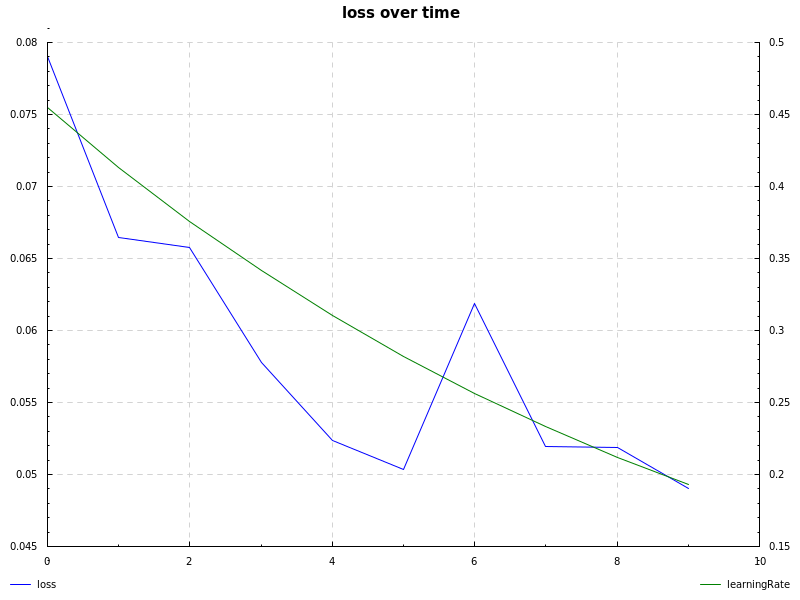313e120f250b092a23b5e9a0fed3b09262811c85
sibe
A simple Machine Learning library.
Simple neural network
let a = (sigmoid, sigmoid') -- activation function
-- random network, seed 0, values between -1 and 1,
-- two inputs, two nodes in hidden layer and a single output
rnetwork = randomNetwork 0 (-1, 1) 2 [(2, a)] (1, a)
-- inputs and labels
inputs = [vector [0, 1], vector [1, 0], vector [1, 1], vector [0, 0]]
labels = [vector [1], vector [1], vector [0], vector [0]]
-- define the session which includes parameters
session = def { network = rnetwork
, learningRate = 0.5
, epochs = 1000
, training = zip inputs labels
, test = zip inputs labels
, drawChart = True
, chartName = "nn.png" -- draws chart of loss over time
} :: Session
initialCost = crossEntropy session
-- run gradient descent
-- you can also use `sgd`, see the notmnist example
newsession <- run gd session
let results = map (`forward` newsession) inputs
rounded = map (map round . toList) results
cost = crossEntropy newsession
putStrLn $ "- initial cost (cross-entropy): " ++ show initialCost
putStrLn $ "- actual result: " ++ show results
putStrLn $ "- rounded result: " ++ show rounded
putStrLn $ "- cost (cross-entropy): " ++ show cost
Examples
# neural network examples
stack exec example-xor
stack exec example-424
# notMNIST dataset, achieves ~87.5% accuracy after 9 epochs (2 minutes)
stack exec example-notmnist
# Naive Bayes document classifier, using Reuters dataset
# using Porter stemming, stopword elimination and a few custom techniques.
# The dataset is imbalanced which causes the classifier to be biased towards some classes (earn, acq, ...)
# to workaround the imbalanced dataset problem, there is a --top-ten option which classifies only top 10 popular
# classes, with evenly split datasets (100 for each), this increases F Measure significantly, along with ~10% of improved accuracy
# N-Grams don't seem to help us much here (or maybe my implementation is wrong!), using bigrams increases
# accuracy, while decreasing F-Measure slightly.
stack exec example-naivebayes-doc-classifier -- --verbose
stack exec example-naivebayes-doc-classifier -- --verbose --top-ten
notMNIST
notMNIST dataset, sigmoid hidden layer, cross-entropy loss, learning rate decay and sgd (notmnist.hs):

notMNIST dataset, relu hidden layer, cross-entropy loss, learning rate decay and sgd (notmnist.hs):

Description
Languages
Haskell
99.4%
Shell
0.6%